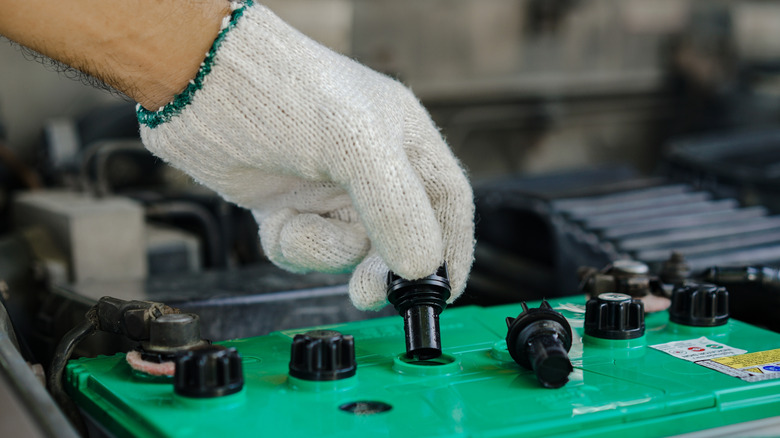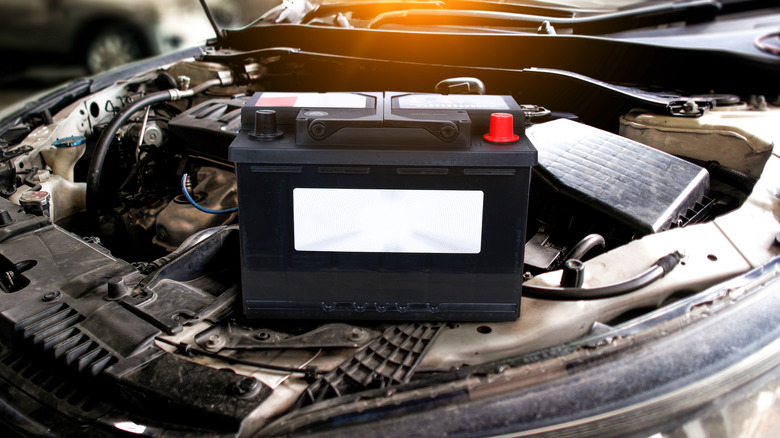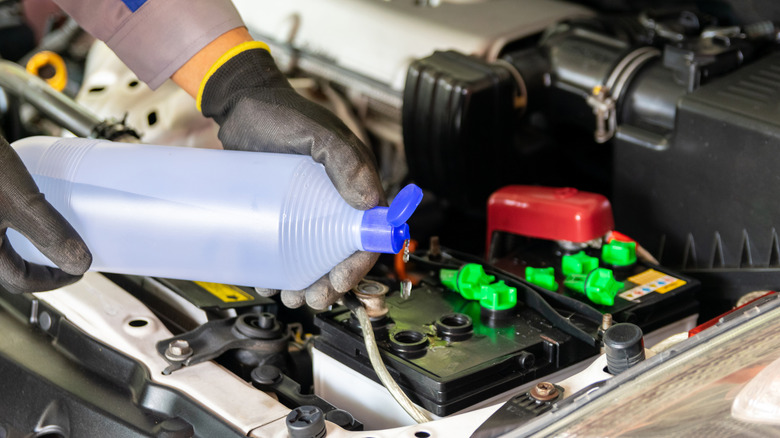How To Tell If Your Car Battery Needs Water (And What Kind To Add)
There are telltale signs that your car's lead acid battery might need water replenishment. Maintenance-free or valve-regulated lead-acid batteries (VRLA) are the types that don't need watering, hence the "maintenance-free" name. But if your ride has a conventional, more affordable, and yet reliable lead acid battery, it requires frequent watering to maintain a steady 12-volt output.
I learned this lesson the hard way as a teenage car nut. Experience has taught me that periodically checking the battery water level is better than getting stranded if the darn thing runs out of charge. As car enthusiasts can attest, a dead battery can happen at the most inconvenient or awkward moment.
Nobody likes to deal with an engine that won't start after having dinner with your significant other or when going home after work. It's why pulling out the dipstick to check the oil and inspecting the battery are among the first things to check before a long trip.
Why do lead-acid batteries lose water?
If you open the battery ports, you'll find lead plates immersed in water and sulfuric acid. A fully charged lead-acid car battery will have an electrolyte solution of about 37% sulfuric acid and 63% water. In this state, the positive plates inside the battery turn to lead oxide, while the negative plates are lead.
The solution loses its sulfuric acid content when the battery discharges. And when it does, the positive and negative plates convert into lead sulfate. When the battery recharges and discharges energy, the chemical reactions make it lose water. Insufficient hydration makes the battery weak and unable to produce sufficient power. It also leads to corrosion and sulfation when left unchecked.
Sulfation will cause the plates to expand and lead to unsightly bulges in the battery casing, which is one of the telltale signs that your car battery needs replacing. Without sufficient water, the battery will have difficulty starting the engine, cause electrical issues due to weak voltage, and may trigger dashboard warning lights in some cars.
How to add water to a car battery (and what liquid to use)
There is no official guideline on when to add water to a lead-acid car battery. It all depends on the type of vehicle, the operating conditions, the outside temperatures, and normal evaporation. The easiest way to tell if the plates inside need water is to conduct a physical inspection at least once a week or every month at the most. This means you'll have to pop open the hood, remove the vent caps, and see with your own eyes (sometimes with the help of a flashlight) if the top plates are exposed to air and not immersed in electrolytes. Since battery water is corrosive, wearing gloves and eye protection before touching anything is recommended.
Regularly checking the battery's water level prevents sulfation and irreversible plate damage. Moreover, adding water ensures that sulfuric acid remains potent enough for electrolysis. Distilled or deionized water is the liquid of choice when topping up a 12V lead acid battery. Pour distilled water into each port until liquid is covering each plate. Remember not to pour too much water to prevent overflowing, excess fumes, and battery damage.
Once done, replace the vent caps and tighten them sufficiently using your hands. It's better to avoid tap water or hard water when refilling a car battery. Tap water has a higher concentration of dissolved solids that could damage the plates. Make it a habit to check the water level regularly to avoid the hassles of dealing with a prematurely weak or dead battery.


